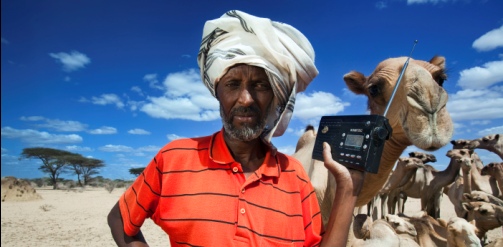The Horn of Africa is in the headlines for all the wrong reasons: drought, famine, conflict, hunger and death. Recent images from Kenya show herders carrying guns for protection against raiders; reports from Somalia highlight the suffering caused by drought and violence.

But if we shift our gaze from the capital cities, where the development and policy elite congregate, to the regional centres and their hinterlands where pastoralists live, then a very different perspective emerges. Here we see the growth of a booming livestock export trade, the flourishing of the private sector, the expansion of towns with the inflow of investment, and the emergence of a class of entrepreneurs commanding a profitable market, and generating employment and other business opportunities; and all of this driven without a reliance on external development aid. This is the livestock trade in the Horn of Africa, across Ethiopia, Somaliland, Somalia, Sudan and Kenya.
This is not to say that the media images of conflict, famine, destitution and death are not real. They are shockingly so. But there is another story unfolding in the Horn. The livestock trade - south to the markets of Nairobi, Kinshasa and beyond; from Somaliland, Somalia, Ethiopia and Sudan across to the Gulf, and to Egypt and North Africa - has long been part of the economy of the region. Pastoralists - livestock keepers who make use of the dry range often through complex, mobile patterns of use - have driven such trade for centuries, linked to traders, brokers, feed suppliers, transporters, milk processors and a host of others engaged in the livestock economy of the region.
A new book – Pastoralism and Development in Africa: Dynamic Change at the Margins, edited by IDS Fellows Jeremy Lind and Ian Scoones, along with Andy Catley from Tufts University, and based on research convened by the Future Agricultures Consortium - argues that the trade, much of it unrecorded, informal and often illegal, amounts to around $1 billion each year. In this region, so plagued by poverty, this is no small sum of money.
Around the rapidly growing small towns of the region, many now grow animal feed for sale. Others, particularly women, process and sell milk. Some provide private veterinary services to herders. And others still offer services to the booming populations in these newly urbanising centres in the drylands.
But, as in other emerging economies, growth comes with inequality. Only relatively few have the larger herds, and can employ people to herd, hire transport and negotiate with traders, border officials or tax agents. The poor, without access to livestock, land or employment, lose out.
In times of conflict or drought – and especially when such shocks combine, as in 2011 – some are driven to destitution, fleeing the area or becoming reliant on hand-outs and relief aid in camps, such as Dadaab in northern Kenya. Studies from Ethiopia, for example, show pastoral societies becoming increasingly unequal over time. In the long term this is a threat to prosperity and security. This is where development aid can make a difference, fostering inclusive growth and income diversification for those unable to make it in the core livestock economy, supporting approaches that avoid the default of destitution and relief camps.
But pastoral development linked to the growth of the livestock economy in the Horn is not all plain sailing. There are many obstacles in the way. Central governments have always seen these marginal areas as troublesome, sites of potential uprising and secession. They have tried to incorporate such peoples in nation states through settlement, taxation and development programmes. These efforts have been resisted, with pastoralists being deemed backward, awkwardly rejecting modernity.
Now there are further threats from so-called 'land grabs', as pastoralists' land is being eyed up by investors, speculators and wildlife conservationists as places to transform into new private business opportunities. However, the legacy of dryland development in the Horn of Africa is a catalogue of grand schemes that have ended in failure, from settlement programmes to irrigation projects.
Yet lessons from the past show that the best use of such land is mobile livestock keeping. Pastoralism can be modern, efficient and highly profitable too, and out-compete the alternatives many times over. More effective policies towards pastoralism and the livestock economy could bring more riches, more widespread development and stability to this troubled region, if only we noticed and tapped into what is already going on.
No comments:
Post a Comment